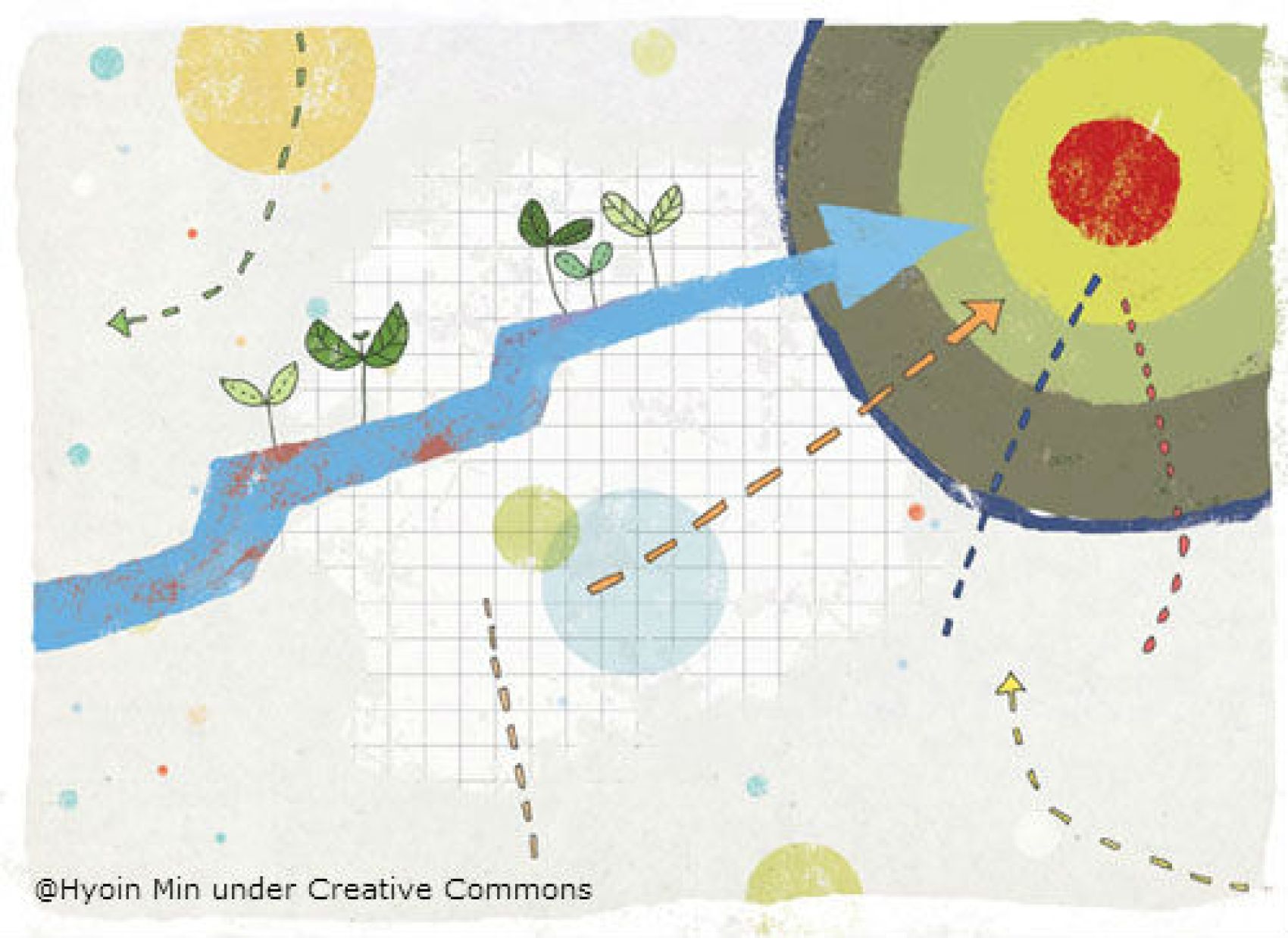Deep shifts in economies, societies and the environment are changing the way citizens worldwide live, work and interact.[1] These changes also affect the public sector, which in 2013 employed over 110 million people worldwide.[2] Although much of the thinking on how public services could evolve has been done in the advanced economies of the West[3], the trends affecting shifts in the public sector are global.
Already, public officials work in complex and volatile environments arising from accelerating change in society and technology.[4] Global trends indicate that future public services will need to cope with, among other things, different needs, demands and aspirations of citizens; the rapid introduction of new technologies; and changing perceptions of careers and employment.[5]
But what does this mean for how today’s public service must change? What more needs to be done for public services in developing countries to be able to achieve the sustainable development goals?
Human development, progress and a changing public service
The delivery of public services is critical for meeting people’s basic needs. However, while governments will likely continue to be responsible for managing and coordinating access to public goods and services,[6] the range of demands are changing. For instance, in today’s era of instant accessibility, keeping up with work or employment opportunities increasingly requires access to mobile broadband. In fact, while many governments are beginning to provide e-service portals, the public mobile access infrastructure needed to support real efficiency of these platforms remains lacking in many places. In this sense, access to services is not the same as quality services.
Rising demand and a need for cost-saving has placed a strain on public services everywhere.[7] In the West, public sector outsourcing and public-private partnership solutions—which have “become accepted as one of the key means of delivering public services,”[8]—indicates a shift from traditional public management towards a model of public entrepreneurship, which embraces innovation, citizen collaboration and brokerage functions for service delivery. Indeed, public service brokerage (where governments retain only core activates, and instead facilitate interactions or delegate responsibility for service delivery[9] represents an opportunity to formalise certain overlooked occupations, like the informal care economy, often dominated by women. But are these models applicable everywhere and are developing countries sufficiently equipped to cope with such a shift? And what will be the consequences for civil servants?
Other global trends are also changing the public service. Higher levels of education are seeing citizens demand participation in policy-making processes; new technologies are changing the way governments engage with citizens and how they deliver services; and ever more complex and so called “wicked” - complex and difficult to solve - challenges require greater inter-agency collaboration.[10] As a result, the future public service must be adaptable, better equipped to collaborate across sectors and between sub-national and central governments. Transformative change, however, does not mean abandoning everything, rather it is about identifying and improving the parts that are working and doing other aspects differently.
A future of passionate and capable public servants
An efficient and effective public service depends on the skills, integrity, values and capability of its employees. Understanding how those traits may need to adapt to rapidly changing models of service delivery is vital.[11] If tomorrow’s public servants will require different skill sets than today’s technocrats, what capabilities are needed to ensure effective and efficient services in the future? And what might excellence in the public service of the future look like?
Today’s public sector struggles to keep up with changes that were unheard of some decades ago. Expectations are evolving, requiring different approaches that emphasise the experiences and dignity of citizens (as much as their needs). Recent reform efforts in New Zealand, for example, demonstrate that successful public sector transformation begins with empowering individuals—citizens, public officers and senior managers—with ‘decision rights’ on service delivery, opportunities to deepen cross-agency collaboration, and direct accountability.[12]
Circumstances are also changing. Governments now need to pay attention to the rise of community or crowdsourced solutions, and maintain their responsibilities of safeguarding state interests while managing increasing numbers of interest groups, while citizens use new media to amplify concerns,[13] . To keep up, the Kenyan Government officially made available statistics and data on public service delivery in 2011 to encourage independent developers to create useful tools and applications.[14] The Kenya Open Data Initiative shows that developing countries must also navigate and adapt to shifting trends.
The examples indicate that public servants of the future will need both technological and soft skills to listen effectively and empathise with their users, understand needs as service users themselves, co-design effective solutions, and empower citizens to shape narratives of change. Encouraging the development of values and attributes that enable these activities is paramount. However, inculcating and strengthening the public service ethos will require going beyond mere service guidelines or codes of conduct. In Singapore, systemic efforts have been made to ensure that operating mind-sets, practices and daily work habits throughout the organisation are kept consistent with espoused public service values. This includes an expectation that leaders will behave as organizational role models.[15]
At the Global Centre for Public Service Excellence, we seek to promote an ethos of New Public Passion.[16] We believe embedding motivation and people-centred design at the heart of development will pave the way for public service excellence. In doing so, public service excellence will ultimately be embodied in a motivated public servant who is passionate because their work reflects a sense of purpose and self-worth; users trust them and the system they operate in; the political rhetoric and public service reality are harmonious; and they are empowered and included in change processes. Achieving public service excellence will therefore also require strategic workforce planning[17] to identify and develop workforce capacity and capabilities to meet current and future challenges for service delivery.[18]
References
Barber, Michael, Alastair Levy and Lenny Mendonca. ‘Global Trends Affecting the Public Sector.’ In Transforming Government. McKinsey on Government series. McKinsey & Company, June 2007. Accessed fromhttp://www.mckinsey.com/client_service/public_sector/latest_thinking/mckinsey_on_government/inaugural_edition on 4 June 2015.
Bott, Maja and Gregor Young. ‘The Role of Crowdsourcing for Better Governance in International Development.’PRAXIS The Fletcher Journal of Human Security, vol. 27 (2012): 47-70. Accessed fromhttp://fletcher.tufts.edu/~/media/Fletcher/Microsites/praxis/xxvii/4BottYoungCrowdsourcing.pdf on 13 July 2015.
Cram, Colin cited in Service Futures. ’12 trends affecting the future of the public sector and public sector outsourcing.’ Service Futures website, 1 January 2015. Accessed from http://servicefutures.com/public-sector/12-trends-affecting-future-public-sector-public-sector-outsourcing/ on 18 June 2015.
Dickinson, Helen and Helen Sullivan. Imagining the 21st Century Public Service Workforce. Melbourne: Melbourne School of Government, October 2014. Accessed from https://s3.amazonaws.com/msog-production/assets/files/000/000/259/original/MSoG-21c-Draft2_2_.pdf?1415916853 on 18 June 2015.
Easton, Stephen. ‘More, better with less: inside NZ’s silo-breaking reform.’ The Mandarin, 26 September 2014. Accessed from http://www.themandarin.com.au/4460-better-less-inside-new-zealands-massive-silo-breaking-public-service-reform/?pgnc=1 on 13 July 2015.
European Commission. A Vision for public services, draft, Public Services unit in DG CONNECT, June 2013, accessed from http://ec.europa.eu/newsroom/dae/document.cfm?doc_id=3179 on 25 June 2015.
Everest-Phillips, Max. ‘From New Public Management to New Public Passion: Restoring the intrinsic motivation of public officials.’ GCPSE Notes on Public Service Excellence 1. June 2015. Accessed fromhttp://bit.ly/NewPublicPassion on 18 June 2015.
Huerta Melchor, Oscar. ‘The Government Workforce of the Future: Innovation in Strategic Workforce Planning in OECD Countries.’ OECD Working Papers on Public Governance, No. 21. OECD Publishing, 3 April 2013. Accessed fromhttp://doi.org/10.1787/5k487727gwvb-en on 18 June 2015.
Petrie, Nick. ‘Future Trends in Leadership Development.’ Centre for Creative Leadership white paper, 2014. Accessed from http://insights.ccl.org/wp-content/uploads/2015/04/futureTrends.pdf on 18 June 2015.
Service Futures. ‘The great government transition: from service provider to service facilitator, broker or commissioner.’ Service Futures website, 16 February 2015. Accessed from http://servicefutures.com/public-sector/great-government-transition-service-provider-service-facilitator-broker-commissioner/ on 13 July 2015.
Tan, Andrew. ‘Public Sector Transformation—Six ways to make a big impact.’ Ethos issue 13, June 2014. Accessed from https://www.cscollege.gov.sg/Knowledge/ethos/Ethos%20-%20Issue%2013,%20June%202014/Pages/Public%20Sector%20Transformation%20Six%20Small%20Ways%20to%20Make%20a%20Big%20Impact.aspxon 13 July 2015.
Tan, Keith and Ghalpanah Thangaraju. ‘The Value of Values in the Singapore Public Service.’ Ethos issue 13, June 2014. Accessed from https://www.cscollege.gov.sg/Knowledge/ethos/Ethos%20-%20Issue%2013,%20June%202014/Pages/The%20Value%20of%20Values%20in%20the%20Singapore%20Public%20Service.aspxon 13 July 2015.
UNDP Global Centre for Public Service Excellence. Work in the Public Service of the Future. GCPSE Working Paper. Singapore: UNDP GCPSE, June 2015. Available at http://bit.ly/1GE94Qa.
Further reading
Accenture. Delivering Public Service for the Future: Navigating the Shifts. Accenture: 2012. Accessed fromhttp://www.accenture.com/SiteCollectionDocuments/PDF/Accenture-Delivering-Public-Service-for-the-Future-112812.pdf on 18 June 2015.
Accenture’s Delivering Public Service for the Future programme website, n.d. Accessed fromhttp://www.accenture.com/sg-en/Pages/service-public-service-future.aspx on 18 June 2015.
Australian National Audit Office. Planning for the Workforce of the Future: a better practice guide for managers, 2001. Accessed from http://www.anao.gov.au/uploads/documents/Planning_for_Workforce_of_the_Future.pdf on 18 June 2015.
CBI. ‘Our future public services: a challenge for us all.’ UK: CBI Public Services, 2014. Accessed fromhttp://www.cbi.org.uk/media/3589619/cbi_public_services_reform_report.pdf on 18 June 2015.
Dickinson, Helen and Helen Sullivan. ‘The Future of the Public Service Workforce: A Dialogue.’ Australian Journal of Public Administration 74, no. 1 (March 2015): 23–32. Accessed from http://onlinelibrary.wiley.com/doi/10.1111/1467-8500.12143/epdf on 18 June 2015.
ISS 2020 Vision: Future of Public Sector Outsourcing. Denmark: ISS World Services A/S, 2014. Accessed fromhttp://www.publications.issworld.com/ISS/External/ISS/ISSWhiteBookTheFutureofPublicSectorOutsourcing/ on 18 June 2015.
Suggested links:
Twitter: @UNDPpublicserv #FutureOfWork #NewPublicPassion
GCPSE facebook: https://www.facebook.com/GCPSE
GCPSE website: http://www.undp.org/publicservice
GCPSE teamworks space: https://www.unteamworks.org/node/421576
Teamworks event page: https://www.unteamworks.org/node/489262
The HDialogue blog is a platform for debate and discussion. Posts reflect the views of respective authors in their individual capacities and not the views of UNDP/HDRO.


